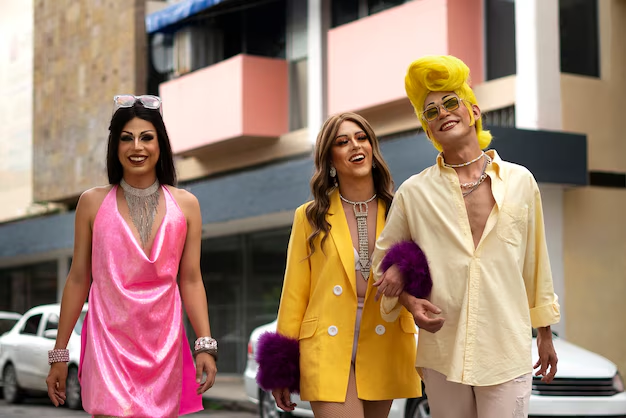The Evolution of Popular Fashion: Trends You Need to Know
As the fashion industry continues to evolve at a rapid pace, it’s essential to stay ahead of the curve and understand the latest trends that are shaping the way we dress. From haute couture to streetwear, the world of fashion is a dynamic and ever-changing landscape that is influenced by a variety of factors, including cultural movements, technological advancements, and celebrity endorsements. In this article, we’ll take a journey through the evolution of popular fashion, exploring the key trends that have shaped the industry over the past century.
The fashion industry has come a long way since the early 20th century, when it was dominated by European designers and couturiers. In the 1920s and 1930s, the rise of Hollywood and the film industry brought about a new era of glamour and sophistication, with actresses like Greta Garbo and Marlene Dietrich becoming style icons. The 1940s and 1950s saw the emergence of American designers like Norman Norell and Claire McCardell, who introduced a more relaxed and practical approach to fashion.
Section 2: The Birth of Modern Fashion (1950s-1980s)
The 1960s were a pivotal time for fashion, marked by the rise of youth culture and the emergence of new designers like Mary Quant and André Courrèges. The mini skirt, which was first introduced by Quant in 1964, became a symbol of the era’s liberation and freedom. The 1970s saw the rise of disco and the emergence of designers like Halston and Bill Blass, who created clothes that were glamorous, glamorous, and glamorous. The 1980s were marked by the rise of power dressing, with designers like Giorgio Armani and Calvin Klein creating clothes that were sleek, sophisticated, and powerful.
Section 3: The Rise of Streetwear and Fast Fashion (1990s-2010s)
The 1990s saw the rise of streetwear, with brands like Supreme and Stussy becoming popular among young people. The early 2000s saw the emergence of fast fashion, with retailers like H&M and Zara offering affordable and trendy clothes. The 2010s saw the rise of athleisure wear, with brands like Lululemon and Athleta becoming popular among fitness enthusiasts. The 2010s also saw the emergence of sustainable fashion, with designers like Stella McCartney and Vivienne Westwood advocating for eco-friendly practices.
Section 4: The Digital Age of Fashion (2010s-present)
The rise of social media has had a profound impact on the fashion industry, with influencers and bloggers becoming key players in shaping trends. The 2010s saw the emergence of e-commerce, with online retailers like Net-a-Porter and Farfetch offering a wide range of fashion products. The 2020s saw the rise of virtual and augmented reality, with brands like Gucci and Dior using these technologies to create immersive experiences for their customers.
Section 5: The Future of Fashion
As the fashion industry continues to evolve, it’s essential to look to the future and consider the trends that will shape the industry in the years to come. One trend that is likely to continue is the emphasis on sustainability, with consumers becoming increasingly aware of the environmental and social impact of their purchasing decisions. Another trend that is likely to emerge is the use of technology, with brands using artificial intelligence and machine learning to create personalized and bespoke fashion experiences.
Section 6: The Role of Celebrity Culture in Shaping Fashion Trends
Celebrity culture has always played a significant role in shaping fashion trends, with A-listers like Audrey Hepburn and Jacqueline Kennedy Onassis becoming style icons. In the 1990s and 2000s, celebrities like Jennifer Lopez and Britney Spears became fashion trendsetters, with their music videos and red carpet appearances inspiring a generation of young people. In the 2010s, celebrities like Kanye West and Kim Kardashian became fashion influencers, using their social media platforms to promote their favorite brands and designers.
Section 7: The Impact of Social Media on Fashion Trends
Social media has had a profound impact on the fashion industry, with influencers and bloggers becoming key players in shaping trends. In the 2010s, Instagram became the go-to platform for fashion influencers, with brands like Chiara Ferragni and Olivia Palermo becoming millionaires thanks to their online presence. In the 2020s, TikTok emerged as a major player in the fashion world, with creators like Addison Rae and Charli D’Amelio becoming fashion influencers.
Section 8: The Rise of Indie Fashion
Indie fashion has always been a key part of the fashion landscape, with designers like Vivienne Westwood and Malcolm McLaren creating clothes that were edgy, avant-garde, and rebellious. In the 2010s, indie fashion became more mainstream, with brands like Alexander Wang and Jeremy Scott creating clothes that were cool, trendy, and affordable. In the 2020s, indie fashion continues to thrive, with brands like Reformation and Everlane offering sustainable and stylish clothes.
Section 9: The Evolution of Beauty Trends
Beauty trends have always been closely tied to fashion trends, with makeup and hair styles becoming an integral part of the fashion landscape. In the 2010s, beauty trends like contouring and highlighting became popular, with celebrities like Kim Kardashian and Jennifer Lopez becoming beauty influencers. In the 2020s, beauty trends like skincare and hair care have become more mainstream, with brands like Glossier and Moroccanoil offering products that are natural, organic, and effective.
Section 10: Conclusion
In conclusion, the evolution of popular fashion has been shaped by a variety of factors, including cultural movements, technological advancements, and celebrity endorsements. From haute couture to streetwear, the world of fashion is a dynamic and ever-changing landscape that is influenced by a variety of trends and styles. As the fashion industry continues to evolve, it’s essential to stay ahead of the curve and understand the latest trends that are shaping the way we dress. Whether you’re a fashion enthusiast or just looking for inspiration, this article has provided a comprehensive overview of the evolution of popular fashion, from the 1950s to the present day.
